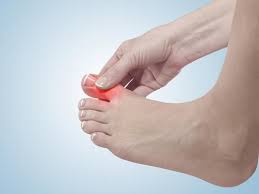Many men worldwide experience symptoms of an enlarged prostate, also known as benign prostatic hyperplasia (BPH). While this condition is common, it can interfere with daily life. Advancements in medical technology have led to new enlarged prostate treatments aimed at addressing these symptoms effectively and with minimal downtime.
What Causes an Enlarged Prostate?
Benign prostatic hyperplasia (BPH) is a condition that results in the enlargement of the prostate gland. The prostate, located below the bladder and surrounding the urethra, plays a role in reproductive health by producing seminal fluid. As men age, hormonal changes may cause the prostate gland to grow. This growth is not typically linked to cancer but can cause the gland to press against the bladder and urethra. This pressure can restrict the flow of urine, resulting in various symptoms that impact quality of life. BPH is prevalent and increasingly common in older men.
What Are the Symptoms?
Symptoms of BPH can vary depending on the severity of the condition. Many patients find that these symptoms gradually worsen over time. One of the most apparent and frequent symptoms is lower urinary tract symptoms (LUTS), which include changes in urination patterns and frequency.
Common symptoms include:
- Difficulty initiating urination
- A weak stream of urine
- Frequent urination, especially at night
- A sensation of incomplete bladder emptying
- Dribbling at the end of urination
Though not life-threatening, untreated BPH can lead to complications, such as urinary tract infections.
How Does Prostate Artery Embolization Treat It?
For men seeking enlarged prostate treatments without the invasiveness of traditional surgeries, prostate artery embolization (PAE) offers a less invasive alternative. Prostate artery embolization is a minimally invasive procedure. The goal is to reduce blood flow to specific areas of the prostate, shrinking its size and alleviating pressure on the bladder and urethra.
The general guideline for the procedure may include these steps:
- Procedure: During the procedure, the care provider makes a small incision, typically in the groin or wrist, to access a blood vessel. A thin, flexible catheter is then guided through the arterial system to the blood vessels supplying the prostate.
- Blocking Blood Flow: Once in position, the care provider injects microscopic particles into the prostate’s blood vessels. These particles block blood flow to targeted areas of the prostate, causing those areas to shrink over time.
- Post-Procedure Care: PAE is typically an outpatient procedure, meaning patients can go home the same day. Recovery is often rapid, with most men resuming normal activities within a few days.
Benefits and Considerations
PAE’s appeal lies in its minimally invasive nature. Outcomes of PAE are generally positive. The majority of men experience significant symptom relief and improvements in their quality of life within weeks to months after the procedure. It is worth noting that not all men are ideal candidates for PAE. A thorough consultation is needed to determine whether this treatment aligns with individual needs and medical history.
Seeking Enlarged Prostate Treatments
Benign prostatic hyperplasia can significantly impact day-to-day life, but advancements in medical science have introduced effective ways to manage and alleviate symptoms. Medical professionals can properly evaluate your condition, provide recommendations, and walk you through treatment options best suited to your circumstances. Engaging early with experts can lead to a better understanding of your condition and treatment possibilities.



